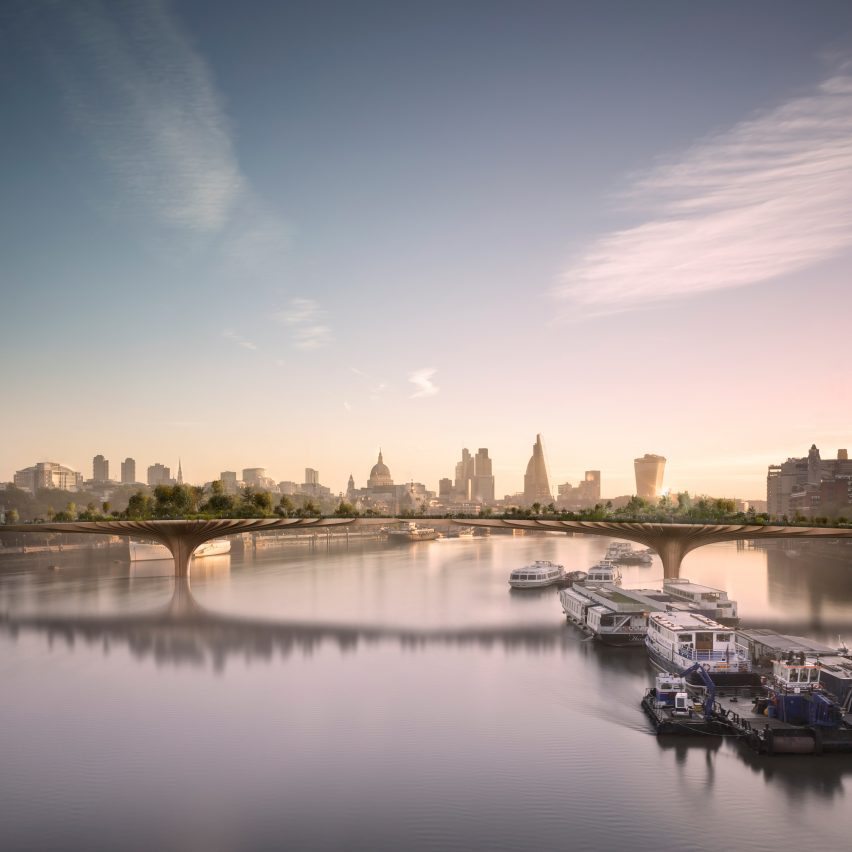This week on Dezeen: British designer Thomas Heatherwick was forced to defend his Garden Bridge proposal this week after reports emerged that the project was missing £22 million in funding.
Heatherwick appeared on television to speak up for the controversial bridge planned for London's River Thames, which he claimed had become a political football. The designer also said that scrapping the proposal would suggest to the world that the UK had lost confidence in itself.
Elsewhere, the world's largest aircraft – dubbed the Flying Bum – completed its maiden voyage over the UK and we featured the rebranding of England's Premier League as the new season kicked off.
In the latest Brexit news, London Design Festival and Creative Industries Federation founder John Sorrell told Dezeen that creatives needed to "get their act together and speak with a united voice" to protect the future of the sector.
In New York, architects proposed new uses for Philip Johnson's Queens pavilion completed for the 1964-65 World's Fair, and the construction of KPF's supertall tower in Manhattan moved forward after a legal challenge to block the project was abandoned.
Researchers at MIT's Media Lab created a series of smart temporary tattoos that can control devices through touch and Taxi app Uber announced its intention to trial a fleet of autonomous Volvos on the roads of Pittsburgh later this month.
Reality stars the Kardashians shocked Dezeen readers after speaking about their appreciation of Modernist architecture and "Le Courvoisier".
In other news, Pritzker Prize-winning Australian architect Glenn Murcutt revealed new images of his first mosque in Melbourne, a promotional video was released showcasing a massive ranch in New Mexico featuring buildings by Tadao Ando, and we published an exclusive movie documenting Wang Shu's museum in China built from the remains of demolished villages.
Popular stories this week on Dezeen included a rustic house in Aspen renovated in line with the Japanese principle of wabi-sabi, a tent-like structure designed to offer a luxury alternative to camping and a photography series that documents buildings in the former Eastern Bloc.
More architecture | More interiors | More design | More news

